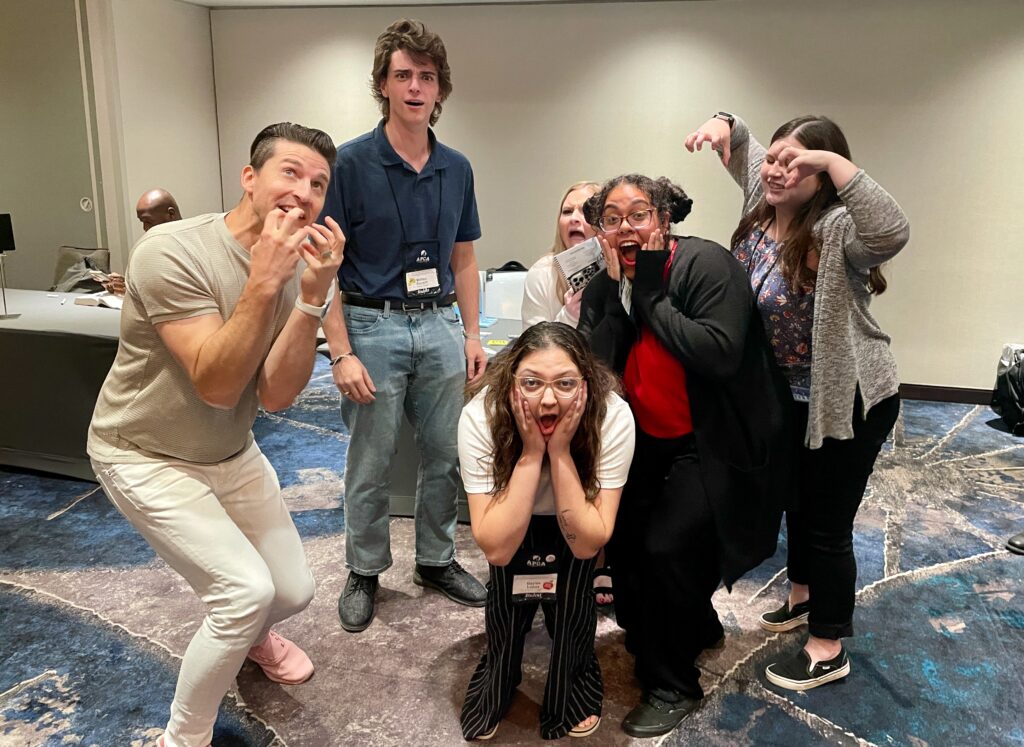“You’re just so perfect!”
He was 100 feet away in an audience of 300, but his words landed with the force of a thunderclap on my heart. For a moment, it felt like he and I were the only two people in the room.
What he intended as a compliment hit me more as scathing critique—an observation that pierced through my carefully curated stories. And he wasn’t wrong. I had been presenting only the most polished, positive sides of my life. My successes, my wins, my neatly wrapped-up stories of triumph.
That moment, many years ago, was a turning point in my career as a speaker.
I realized that in my quest to train leaders on how to better connect and engage with their people, I was unintentionally creating distance. By sharing only the highlight reel, I wasn’t just being disingenuous—I was alienating the very people I wanted to connect with.
And here’s the kicker: it wasn’t just bad for them. It was bad for me.
The Pratfall Effect: Why Perfection Isn’t Relatable
It turns out, there’s science behind this. It’s called the Pratfall Effect.
Psychologists first uncovered this phenomenon in the 1960s. It’s the idea that when competent people admit to making mistakes, they become more likable—not less. It’s the difference between a leader who pretends to have all the answers and one who admits, “I’m not sure, but let’s figure it out together.”
Why does this happen? Because perfection creates distance. It’s intimidating. But vulnerability? That builds bridges.
Think about your own experience. Have you ever felt more drawn to someone after they admitted a failure or embarrassing moment? Did their honesty make you trust them more? That’s the Pratfall Effect at work.
As leaders, speakers, or even team members, we often feel pressure to put on a brave face. To have it all figured out. But the truth is, your audience—whether it’s a room of 300, your team, or your organization—wants to see the real you.
Not the highlight reel. Not the “perfect” version. The whole story.
Why Vulnerability Matters for Leadership
In leadership, authenticity isn’t just a nice-to-have; it’s a must. According to Harvard Business Review, leaders who display vulnerability foster stronger team connections and higher levels of trust. And when people trust their leader, they’re more likely to be engaged, collaborative, and productive.
Sharing your struggles also empowers your team. When you admit to mistakes or challenges, it gives them permission to do the same. This creates a culture where innovation and learning thrive because people aren’t afraid to take risks.
No one wants to work for—or follow—someone who seems untouchable. Leaders who share their humanity make it easier for others to relate, to engage, and to contribute authentically.
My “Pratfall” Moment
After that guy called me out (intentionally or not), I decided to experiment.
At my next talk, instead of opening with my usual polished story of success, I shared a moment when I completely bombed a presentation. I was actually booed off stage. I described the awkward silence in the room, the pit in my stomach, and the way I replayed every mistake in my head for weeks.
The reaction? People leaned in. They laughed. They nodded in recognition. And afterward, a line of people waited to talk to me—not to congratulate me on my success, but to share their stories of failure.
That’s when I realized: vulnerability doesn’t just make you relatable. It makes you magnetic.
How to Embrace Imperfection as a Leader
If you’re ready to stop chasing perfection and start building authentic connections, here are a few tips:
- Share the Whole Story: The next time you present a win, include the struggles it took to get there. Your team needs to see the messy middle, not just the polished ending.
- Admit When You Don’t Know Something: Leadership isn’t about having all the answers. It’s about guiding your team toward solutions.
- Model Vulnerability: Share your failures and lessons learned during team meetings. When leaders go first, it creates a safe space for others to follow.
- Celebrate Mistakes: Build a culture where mistakes are seen as opportunities to learn, not reasons to punish. This fosters creativity and innovation.
A Challenge for Leaders
The next time you’re tempted to present the “perfect” version of yourself, pause. Ask yourself: Am I being real? Am I sharing the whole story?
Try sharing a moment when things didn’t go as planned. Watch how your team reacts. Watch how they lean in, nod, and maybe even laugh in recognition.
Closing Thought
Perfection might impress, but vulnerability inspires. To truly build a Culture of Connection™ within your team, organization, or community, leaders need to connect with their people on a human-to-human level.
So, what’s your “pratfall” moment? It could be what you are missing to unlocking deeper trust, stronger connections, and a culture where everyone feels seen, valued, and engaged.
Go ahead—be human. It’s the most powerful thing you can do as a leader.




